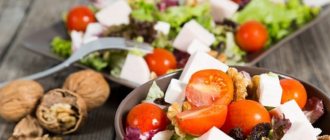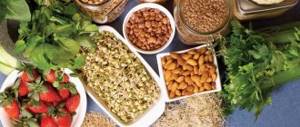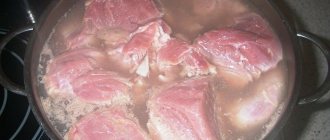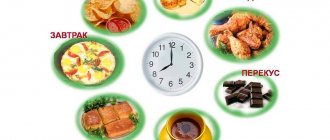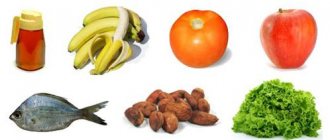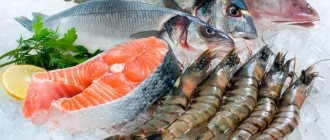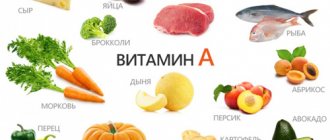A gluten-free diet - first of all, such a diet is not only a way to get rid of unnecessary pounds, but also an excellent opportunity to quickly return the body condition to normal for people who are allergic to various grain products. Some organisms cannot properly digest gluten, which is found in all grain products, resulting in complete intolerance to grains.
Gluten can be called a protein that is found in cereal products; when it enters the body, it moves through the small intestine and can sometimes damage the intestinal villi, which in turn are responsible for the passage of food through the intestines. If you have any problems with the gastrointestinal tract (gastrointestinal tract), then it makes sense to quickly pay attention to a gluten-free diet. It will help you not only lose extra pounds, but also bring your body back to normal.
Gluten free carbohydrates
If you need to follow a gluten-free diet, there are plenty of opportunities to get carbohydrates:
- buckwheat;
- millet;
- millet;
- rice.
Also, their “foreign” analogues will be an excellent addition to the diet: quinoa, amaranth, brown rice. Potatoes, peas and corn can diversify your diet. Make your baked goods using corn or rice flour; you should also invest in “fashionable” almond flour or guar gum.
You need to be careful with oatmeal, although it is naturally gluten-free. Some people with celiac disease have a similar reaction to oat proteins also because the processing takes place in factories where different crops are supplied. It's best to use cereal labeled gluten-free, although servings up to 50g are safe.
What is gluten and why is it dangerous?
Housewives know that the more gluten in the flour, the more elastic and fluffy the dough. Gluten is a gluten that is an integral part of some types of cereals. Most gluten is present in wheat grains and flour, barley, and rye grains. Progress in the food industry has made it possible to use gluten products as thickeners in the production of mayonnaise, ice cream, ketchups, sauces, and confectionery. Pasta products are not complete without the inclusion of gluten.
Wheat grains and flour contain the most gluten
A small number of people have had a persistent allergic reaction to gluten consumption. This pathology is caused by dysfunction of the small intestine. In healthy people, excessive consumption of gluten products can provoke the development of pathological inflammatory processes on the walls of the mucous membrane of all parts of the intestine. Manifestations of these processes include stool disturbances, increased flatulence, and a feeling of heaviness after eating.
Living with Celiac Disease: What is it?
The gluten-free diet is strict and lifelong if you have symptoms of celiac disease:
- dermatitis herpetiformis with itchy rash;
- fatigue;
- diarrhea, constipation, flatulence, abdominal pain;
- headache;
- Iron-deficiency anemia;
- muscle and joint pain;
- mood swings, depression, poor concentration;
- numbness of hands and feet;
- osteoporosis;
- infertility and menstrual irregularities;
- obesity or thinness.
Statistics show that 83% of people are simply unaware of gluten sensitivity or intolerance and consume bread, pasta, cookies and cakes, worsening their own well-being. Complications of celiac disease include osteoporosis, autoimmune diseases and cancer. Therefore, a gluten diet for weight loss is just a side effect experienced by truly sick people who are forced to adjust their diet.
There are three types of gluten intolerance:
- Celiac disease is a severe genetic autoimmune disease that affects 1% of the world's population.
- Sensitivity (intolerance) - causes similar symptoms, but without intestinal damage.
- An allergy to wheat provokes various reactions, ranging from mild hives to anaphylactic shock.
Are gluten-free foods healthy?
If we consider gluten-free products comprehensively, it will be difficult to say that such a diet is correct and healthy. After all, among them there are also very unhealthy foods for weight loss. For example, chocolate, sugar, potato chips and mayonnaise are gluten-free, but they are unlikely to help you lose weight.
That is why, if you decide to switch to a gluten-free diet, you need to carefully work through the menu and choose products that are not only gluten-free, but also with minimal calorie content.
List of prohibited products
In addition to wheat, rye, and barley, you should not eat all processed products of these cereals:
- bulgur, couscous, semolina;
- bread, muffins, muesli, crackers, crackers and anything that contains flour;
- pasta, paste-shaped snacks, sauces, low-fat sour cream, margarines, bouillon cubes, mivina, corn flakes, instant coffee;
- sausages, semi-finished meat products, pizza, dumplings and pancakes;
- canned fish and meat in tomato sauce, crab sticks, artificial caviar and caviar spreads, home canned food with vinegar;
- vodka and products containing it, beer;
- processed cheeses, yoghurts, curds, condensed milk due to the addition of flour;
- chocolates and sweets.
Milk, cheeses and butter with a fat content above 80% are introduced into the diet carefully in the first weeks after an exacerbation. Lactose in some cases provokes a similar allergic reaction.
When removing grains from your diet, you should pay attention to sugar consumption, which may increase as your caloric intake decreases.
Gluten-free diet: weekly menu by day
Safe meals based on gluten-free products are included in first and second breakfasts, lunches, afternoon snacks, dinners and snacks.
Monday
- Rice pudding with raisins made with milk and eggs with corn grits.
- Cottage cheese salad with tomatoes and herbs.
- Borscht with lean beef.
- Fruit salad with nuts.
- Fish in the oven with vegetables.
Tuesday
- Buckwheat with kefir, apple.
- Cheese cheese and berries.
- Chicken soup with rice.
- Buckwheat bread with honey.
- Stuffed peppers with meat and mushrooms.
Wednesday
- Omelet with vegetables and herbs.
- Cottage cheese with prunes.
- Stewed beans with vegetables and meat.
- Banana.
- Fish in egg with milk (instead of batter) in the oven.
Thursday
- Cottage cheese casserole with millet and raisins.
- Berry/vegetable salad with feta cheese.
- Pilaf with meat, cabbage salad.
- Apple baked with honey and nuts.
- Chicken breast with green beans.
Friday
- Carrot salad with sour cream and raisins.
- Cheese cheese with bell pepper.
- Lobio with walnuts.
- Any fruit.
- Potato cutlets with rice flour, stew.
Saturday
- Cheesecakes with corn grits and raisins.
- Kefir with fruits.
- Steamed chicken cutlet, vegetable soup.
- Banana pancakes with rice flour.
- Stewed vegetables with mushrooms or meat.
Sunday
- Vegetable pancakes with rice flour.
- Carrot cookies made from rice flour.
- Borscht with steam cutlet.
- Mix of nuts and dried fruits.
- Buckwheat with turkey fillet.
The menu contains products with complex carbohydrates and dishes without frying. Therefore, a gluten-free diet for weight loss will help people who abuse sugar and flour to lose weight and improve their well-being.
What foods can you eat?
- Any dairy and meat products. After all, gluten is a protein of plant origin, and therefore it cannot be in fish, meat and milk, kefir, and yogurt.
- A gluten-free diet allows the consumption of legumes. Among them are lentils, both red and brown, chickpeas, beans, and peas. If you additionally consume vegetables and fruits, this can become the main substitute for dietary fiber.
- Animal fats and oils. This includes all vegetable oils and rendered pork fat. They contain only fats, and therefore there is no dangerous vegetable protein in them. But it’s worth thinking about their calorie content. Not everything can be eaten if you are pursuing the goal of losing weight.
What can you eat on a gluten-free diet?
- Corn, rice and buckwheat are also acceptable. Buckwheat, although it seems like a cereal product, is still a grass, and therefore does not contain gluten. But with corn, things are different, since it is a cereal product, but it does not contain gluten.
- Fruits, vegetables and various nuts. On this diet, in terms of vegetables and fruits, you can not deny yourself anything. Even potatoes are allowed, both sweet and regular.
As you can see, the list of allowed foods is quite extensive, and therefore you will not have to starve on this diet. Although several high-calorie foods will still have to be excluded even from the list of permitted foods.
Interesting: Which bran is best for weight loss
The dangers of dieting for weight loss
Blindly avoiding gluten-containing foods without medical advice can be detrimental to your health for a number of reasons:
- Oatmeal and whole grain bread are sources of fiber for humans. Dietary fiber is important for preventing constipation, flatulence, and refusal of it disrupts the function of the gastrointestinal tract.
- Nutrient deficiencies are associated with avoiding grains. A lack of vitamin B, iron and zinc is observed in people on low-carbohydrate diets, which is similar to gluten-free diets. Weakness, fatigue, poor sleep can be dangerous consequences.
- Gluten in products is often replaced with harmful substances, since without it the texture and taste are lost. Often they add a lot of sugar, salt, and fat, which makes them high in calories and contributes to obesity.
- Increased consumption of protein foods along with a lack of fiber impairs intestinal motility.
If you do not experience bloating, abdominal pain, diarrhea, or dizziness after eating white bread, oatmeal or wheat porridge, then you should not switch to a gluten-free diet menu.
Testing for gluten sensitivity is simple and difficult at the same time:
- Remove gluten-containing foods from your diet for two weeks.
- Keep a food diary recording how you feel.
- After two weeks, gradually reintroduce foods one every two days, noting signs.
Why is it needed in food?
Unlike preservatives, thickeners, dyes and other substances found in foods, gluten is a natural protein. It is this that gives the familiar baked goods that same fluffiness and aroma, on which the quality of all bakery products, semolina, and cereals depends. Previously, it formed the basis of the diet and was practically ignored until the spread of gluten intolerance became of interest to both consumers, manufacturers, and doctors. Today it is considered harmless for 98% of the population, but many have decided to give up gluten because it has become fashionable and easy - good for health.
Instant Diet Recipes
Curd and millet casserole
Boil 80 g of millet for fifteen minutes, cool. Mix half a kilo of cottage cheese well with a fork. Beat two eggs and 4 tablespoons of sugar, add to the cottage cheese and mix well. Then mix with millet and a quarter teaspoon of soda. Transfer to a tin and bake for thirty minutes.
Chicken in batter
Wings or legs in a batter of rice flour, mustard, homemade yogurt and lemon juice are fried in a frying pan with olive oil. As a dietary option, pour chicken fillet with a sauce of honey, butter, mustard with the addition of curry and bake in the oven.

